The stages of psoriasis are defined time intervals during which the disease takes on its characteristics. Many patients with psoriasis mistakenly refer to this stage as the severe or mild form of the disease, but in medical records, the term has a completely different meaning.
What are the stages of psoriasis?
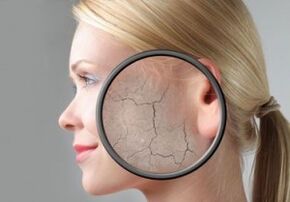
Psoriasis is considered to be a recurrent skin pathology, in this case, genetics is to blame. According to dermatologists, at least 2% of the world’s population suffers from this disease, which means that the problem is very urgent. During psoriasis, two conditions are obvious:
- Relapse.This term refers to the deterioration of the skin. In the relapse, the patient suffers from itching, pain, burning sensation, extensive rash, irritation and discomfort. Insomnia, neurosis and anxiety exacerbated the victim's situation.
- Relief.This word is used to mean improving the appearance of the skin. After relief, the skin returns to normal color, redness disappears, and the area of psoriasis plaques decreases.
The various stages of psoriasis partially repeat the description of remission and relapse, so many dermatologists use these words as synonyms. In clinical practice, three stages of psoriasis are described:
- Progress phase;
- Fixed;
- The return stage.
Considering that we are talking about a cyclical process, the stages flow into each other successively and form a continuous process of disease.
Facts!The progressive stage is considered the hardest to feel.
How is psoriasis progressing?
The progress phase is triggered by many triggers, such as cold season or stress. In some cases, even an experienced dermatologist cannot clearly determine the trigger. In the progressive phase, the following happens:
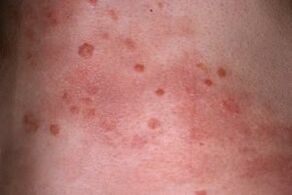
- Psoriatic nodules develop rapidly, affect the skin, and connect to each other in so-called plaques, causing flaky and itchy. Plaques are spots of any shape, usually round or oval, sometimes with uneven edges.
- Papules, which are individual nodules in a psoriasis rash, are bumps on the skin. The edges of the pimples are not peeled off, while the central part is peeled off. As a large number of dead spots accumulate, plaque begins to rise above the skin surface. Puffiness makes their appearance more uneven.
- This stage of pathology is characterized by isomorphic reactions, including skin damage, abrasions, injections, cuts, and exacerbation of rashes during microtrauma. This phenomenon is named after Cobner.
Delayed response is characteristic of the developmental stage of psoriasis. In some cases, the rash appears about 9 days after exposure to triggers (such as food allergens). Usually, a psoriasis rash will appear within 24 hours after exposure to adverse factors.
Interesting!95% of patients with psoriasis have some type of food intolerance, which can cause relapse. To avoid getting worse, you need to keep a food diary and observe your reactions to different types of food.
Fixed and hidden stages
The stable period is the period when the victim's condition is relatively stable during the course of psoriasis. In the fixed phase:
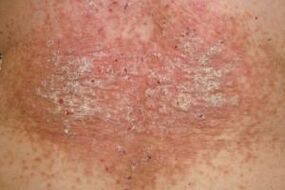
- Psoriasis plaques have a smooth outline. The entire surface of the plaque is covered with thick scales that can be easily peeled off. Itching and discomfort are moderate. There are no bright red inflamed edges around the papules.
- For minor skin injuries, no Koebner phenomenon has been observed, which means that healthy skin from scratches or cuts no longer turns into psoriasis plaques.
The degenerative or recessive stage is characterized by numerous lesions of psoriasis. First, a margin of pseudo-atrophy can be seen around the papule, and then the patient notices that the peeling of the skin stops quickly and a pigmented patch is formed at the site.
Pathological severity
Another diagnostic criterion is the assessment of the area of psoriasis lesions. The term "severity" is used to describe it. Dermatologists distinguish 3 types of serious skin diseases:
- Easy.Psoriasis plaques account for 1% to 3% of the total area of the human body. A small area of the affected area does not mean that the patient is in good condition. With psoriasis on the head or face, even two plaques are enough to cause discomfort and pain.
- .The outbreak of psoriasis accounts for 3% to 10% of the body. In this case, the joints, scalp, back of the palms and feet, chest and outer surfaces will be affected. This epidemic causes severe intoxication and severe pain. The patient may completely or partially lose the ability to work, and the mental state and nervous system state will deteriorate.
- is heavy.This disease covers more than 10-15% of the skin surface. According to rough estimates, if psoriasis accounts for more than a quarter of the body, the possibility of liver or kidney failure will greatly increase. Decompensation of internal organs may cause death from psoriasis.
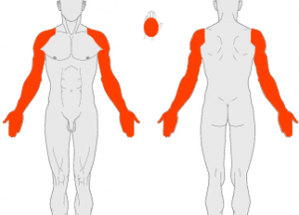
In order to fully assess the severity of psoriasis, a special scale called PASI is used. This ratio takes into account:
- Percentage of healthy and diseased skin;
- Pathological stage;
- The patient's response to medication;
- Individual tolerance of psoriasis (mental state, neurological and psychological complications);
- Dynamic laboratory test objective data (for example, the volume of uric acid in a blood test).
The diagnosis takes into account all the symptoms that affect the condition of patients with psoriasis. The intensity is reflected in the medical record:
- Skin itching process;
- Redness;
- Puffiness;
- hyperemia;
- Thickening of the skin;
- Exfoliating;
- blood flow;
- Swelling;
- infection;
- Pain syndrome.
On the PASI scale, the number of skin lesions is described by numbers, ranging from 0 to 72, where 0 is no skin symptoms, and 72 is the large-scale, largest spread of the disease.
Attention!First of all, it is important for the patient to understand and monitor the worsening of the disease. If you experience bad symptoms, you should go to a dermatologist immediately, because psoriasis does not always enter a stationary phase. Recurrence may last for decades.
The treatment of psoriasis depends on the stage
For each stage of the disease, a set of their own treatment measures have been developed. Therefore, the first thing a dermatologist must do is to determine whether psoriasis is progressing, stabilizing or regressing.
How to treat during the ongoing period
Every patient with psoriasis guesses from his own feeling that remission is about to end. If the itching worsens, the skin looks worse, and the psoriasis has clearly spread to the surface of the body, treatment should be started. Late treatment has the following functions:
- The patient is committed to preventing further deterioration of the condition, strictly abiding by dietary habits, and avoiding pathological processes (stress, smoking, drinking).
- For severe itching, antihistamines can be used. Another advantage of these drugs is that they can eliminate swelling in the psoriasis area.
- Dermatologists have prescribed a variety of topical treatments that can heal, soften and thin the skin. According to the doctor's decision, choose a cream, ointment or spray. Tar soap and solid oil compresses have positive momentum. You can also use compresses or apply makeup with Dead Sea mud.
The main task at this stage is to stop the disease getting worse before the disease enters a long-term relapse. According to the indications, doctors choose glucocorticoids in the form of injections or ointments.
Attention!Corticosteroids should be used intensively and short-term under the guidance of a dermatologist. You can give yourself injections or apply antihistamine ointments.
Fixation and regression phase treatment
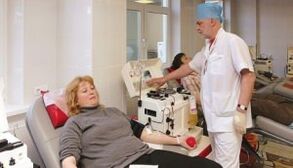
The further action of the dermatologist depends on the body's response to the selected treatment. The following situations may occur:
- The medicine has a positive effect. Within 1-2 weeks, psoriasis will pass the stable phase and will fade and relieve.
- The medicine is not effective. If the results are still not visible after 2 to 4 weeks from the moment the medication is prescribed, this is the reason for changing the drug list or the attending doctor.
- Exacerbated by medication. Such dynamic changes are also possible, especially when the dosage or frequency of administration is insufficient. The recurrence is delayed, the psoriasis plaque covers a large area of the body, and the person needs to be hospitalized.
In medical institutions, more powerful therapies are used, such as hardware blood purification. With a good response, psoriasis enters a stable phase, which may last from several days to several months.
Interesting!More than 80% of patients noticed seasonal features of worsening conditions. This makes the disease predictable and prepares you for the onset of recurrence.
The list of drugs in the fixed and degenerative phases is exactly the same, but the dose and frequency of administration is less than the drugs in the ongoing phase.
10-15 years of remission period
A competent dermatologist has set himself the following task-to choose drugs and physical therapy agents that can improve psoriasis patients as long as possible. In this case, the patient himself should try his best to promote treatment, avoid triggers and take medicine responsibly. If the alliance between the patient and the doctor develops successfully, the duration of remission is unlimited. Stable health can last for 15 years or more.























